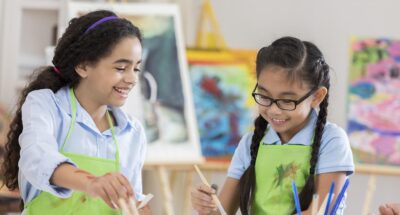
Using Art to Build Bridges
Students identify, reflect, and create art that depicts a time when they settled a disagreement with someone else, practicing perspective-giving and taking skills.

Students identify, reflect, and create art that depicts a time when they settled a disagreement with someone else, practicing perspective-giving and taking skills.
Students will:
This can be done in pairs or as a short journal reflection.
Now, encourage students to explore the other person’s perspective through art.
Empatico: Empatico is a social-emotional learning platform, connecting students with themselves, each other, and the world through interactive and globally collaborative classroom tools.
A study with 21 South Korean five-year olds showed that engaging in reflection, role-playing, and discussion around bullying increased children’s perspective-taking and empathy towards the victims.
In a series of five studies with diverse groups of undergraduate students, researchers found that participants who engaged in perspective-taking (in comparison to participants who did not) were rated more highly by people with whom they interacted. Furthermore, perspective-takers showed more approach-oriented behaviors towards outgroup members and displayed greater awareness of racial inequalities.
Finally, a study of mainly white freshmen from a high school in the northeastern United States found that students who participated in a visual arts and music-based social-emotional learning program (in comparison to those who didn’t) increased their levels of perspective-taking and empathic concern.
As teachers, we can help our students cultivate empathy for others through the encouragement of perspective-taking and giving skills. By doing so, not only can we strengthen our students’ relationship with others, but we can also help improve intergroup interactions, which is so important as divides continue to grow in the U.S. and elsewhere around various group identities.
Furthermore, some scholars suggest that empathy is the mechanism that drives altruistic behavior. By supporting our students’ perspective taking and giving skills, we can create more prosocial communities in our classrooms and beyond.

Do you want to dive deeper into the science behind our GGIE practices? Enroll in one of our online courses for educators!
Comments